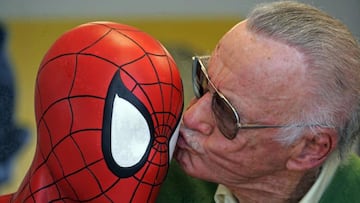How Stan Lee defied the Comics Code Authority, reclaiming the comics for good
Stan Lee decided to launch a comic book without the approval of the U.S. comic book censor, making the publishing requirements more flexible.

Today Stan Lee, a legend in the world of comics and creator of characters such as Spider-Man, X-Men, Thor or Iron Man, who continue to be popular decades later, would have turned 100 years old. Lee died in 2018, and life gave plenty of anecdotes and one of them is the one we are telling today, about how he was able to bypass the strict control of the CCA (Comic Code Authority), which regulated the content of comics in the United States.
What was the CCA?
This code was nothing more than a sort of seal of approval that stopped appearing in 2011, and that for 60 years was the sign that the censors at the Comics Magazine Association of America gave the go-ahead for publication. Although the Code was not mandatory by law, and some companies chose not to adhere to its use, there was some pressure from advertisers and retailers for comics to carry it.

The association behind this seal was formed in 1954, at a time when comics were accused of propagating values unsuitable for youth. Following a moral panic centered around a series of Senate hearings in response to widespread public concern over graphic violence and horror imagery in comic books, as well as the controversial Fredric Wertham's book Seduction of the Innocent. The organization carried a "code of ethics and standards" to be followed by the industry.
The rules were clear: no sex, drugs, gore, shooting, religion, or excessive violence, as well as foul language or disrespect towards authority figures. It was not even allowed for the heroes to suffer defeat at the hands of the villains, as well as the presence of supernatural antagonists such as vampires, werewolves, zombies, and so on... In short, if you wanted to have the seal of approval, it had to be extremely neat... and creative.
This is how Lee stood up to
Obviously, in the middle of all this was Stan Lee. He was always able to push the envelope, without reaching it, to always get this CCA stamp, finding new ways to tell stories that otherwise wouldn't have reached young people. So much so that the United States Department of Health, Education and Welfare contacted him to create a comic book to raise awareness about the effects of drugs, recognizing the impact that comics and characters like Spider-Man had on young Americans.

Related stories
In this way, and from number 96 to 98 of The Amazing Spider-Man, Lee elaborated a subplot in which the wall-crawler saved the life of a man who, under the effect of drugs, was dancing on a roof and was about to fall into the void. All this while fighting with the Green Goblin, and showing the latter how the pill abuse was affecting his son, Harry Osborn. As we can imagine, the CCA rejected the story, but Lee argued that it was difficult to talk about the effects of drugs without mentioning them.
Despite this, Lee was not deterred and decided to launch the comic without the CCA seal, having the expected success when something is released without the approval of the censors. After the release of that comic, the CCA revised the requirements for granting its seal and became laxer in relation to drug use, as long as it was exposed in a negative way.
